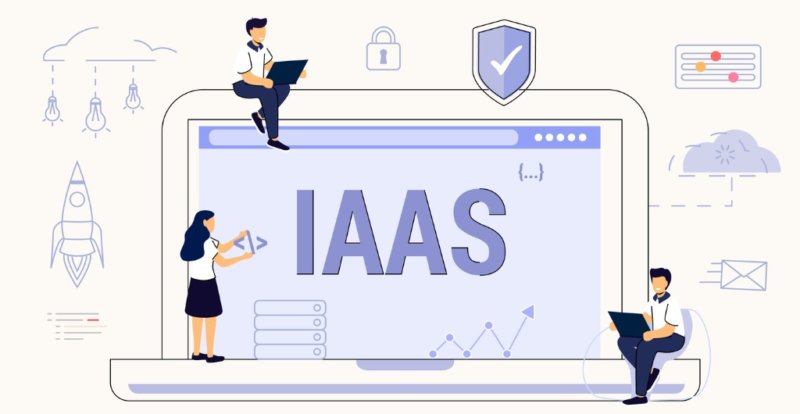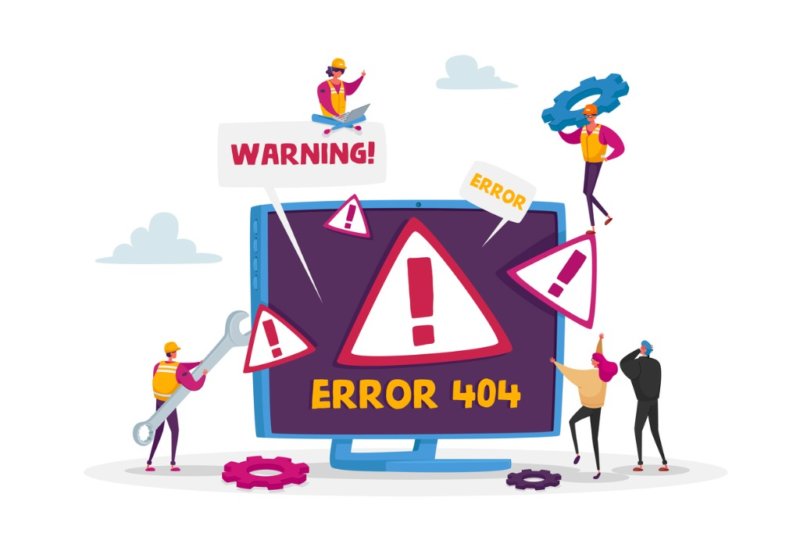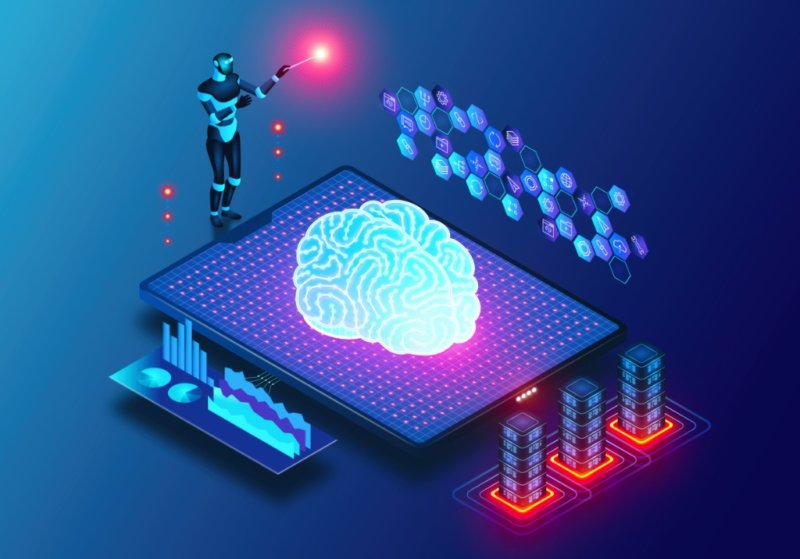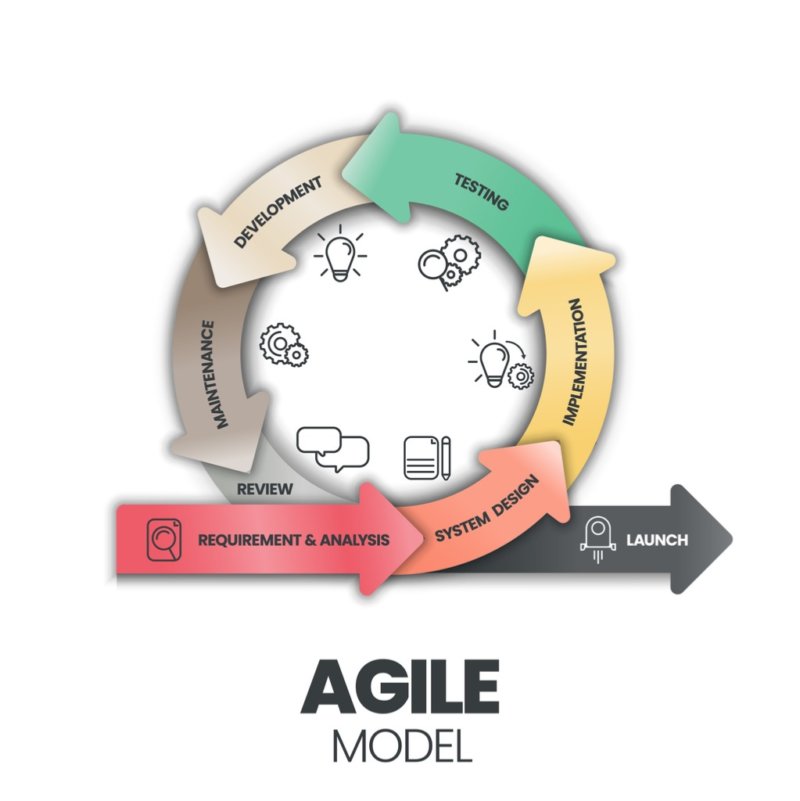B2B Connection
Information and resources for technology buyers
Mobile app development may seem luxurious or too complicated for inexperienced teams. IT isn’t. With modern innovation is that anyone can make an app, whether they are a legit dev wizard, aspiring dev student, or a 40-year-old newbie. You just need to find the right mobile application development software. What is Mobile App Development Software? Mobile app development is the process of creating applications for mobile devices. It’s an amazing way to increase customer engagement with smartphone users. The actual development process depends on the type of mobile app development platform you use. Some tools are built around traditional hand coding, where others have been simplified to be used for low-code or no-code development. Low-code requires some programming knowledge because there may be areas where you need to code but won’t have to build from scratch. No-code designers offer a graphical user interface (GUI) that allows you to build the app with zero programming experience. Many commercial app builders, which are designed for B2C use cases, are entirely no-code. When it comes to using non-commercial app builders for making internal applications for your team, you’ll find many low-code and no-code options. Several will even be open-source. You won’t find any […]
Options for sharing your small business’s passwords were once limited to unprotected emails or post-it notes scattered around the office. Luckily for both security and convenience, those days are behind us. If you’re still using the old ways, no shame, we won’t tell. That just means you have the convenience and security benefits of a password manager to look forward to. The safety of your business’s digital identity is a big thing to trust a third party with. Let’s take a look at why it’s worth doing it and a few trustworthy options to jumpstart your decision process. Why Your Small Business Needs a Password Manager Password management software stores the usernames and passwords for all your business’s various online accounts in an encrypted vault. All these passwords are protected by one master password that you set. Your master password is the only one you’ll need to remember as long as you use a password manager. Check out our “What is a Password Manager?” blog post for a quick refresher on password managers’ basic functions. In addition to these basic features, password managers have plenty to offer small businesses. Secure Password Sharing Each employee at your small business will be […]
You’ve probably been hearing a lot about UCaaS lately. With more and more companies working in offices again, video conferencing products like Zoom have been rebranding. They want to emphasize that they can do more than let you see your remote coworkers’ pets during meetings. Let’s take a look at what exactly is included in UCaaS, and what makes it different from other types of communication software. What Does UCaaS Do? UCaaS stands for unified communications as a service. The name alone gives you a good idea of what UCaaS providers’ goal is: to meet all of a business’s communication needs through a cloud-based, software-as-a-service subscription model. Specifically, UCaaS platforms include: Voice communication/VoIP Video conferencing Messaging Collaboration All these communication capabilities are accessible over the internet. VoIP VoIP (Voice over Internet Protocol) is a technology that allows you to make phone calls over the internet. VoIP users and standard landline or cell phone users can call each other. This makes VoIP an effective replacement for a standard PBX phone system. Here’s a quick rundown of how VoIP technology sends your voice over the internet as data: VoIP supports hardphones (physical phones) and softphones (software that can function like a phone). […]
AI and machine learning (ML) are everywhere, whether you notice them or not. Amazon uses machine learning to recommend products. TGI Friday’s used machine learning to make a virtual bartender. Car manufacturers use machine learning in prolonged, painful attempts to teach cars how to drive themselves (made extra difficult by humans on the road). The use cases are endless. ML algorithms offer unique benefits, but they’re not simple to create, maintain, or deploy. This is why you need a machine learning operations (MLOps) process. MLOps is a tricky beast in and of itself. Blindly deploying an MLOps framework—even a good one—is a recipe for chaos. You need to plan how you’re going to set up MLOps. You need an MLOps strategy. H2 What is MLOps? If you’re new to the idea of MLOps or machine learning in general, take a moment to read our What Is MLOps? article. We explain both concepts in simple terms, demonstrating how and why businesses use them. Machine learning models need specialized development, dataset preparation, evaluation, and maintenance. Getting ML models to provide reliable business value isn’t easy. It requires continuous collaboration between data specialists, machine learning engineers, and software developers. This collaboration is new […]
Choosing the right infrastructure for your business might just be what sets you apart from businesses that fail. Many business owners have been turning to cloud-based infrastructure, as they offer affordable, secure business infrastructure solutions. These solutions allow you to take your business to the next level with integrated cloud computing functionality. Though the grass isn’t always greener on the other side. Some cloud computing solutions reduce your control over the data being processed, and come with bandwidth or redundancy issues. That’s why we picked five solutions that go above and beyond when it comes to handling data and processing speeds. Depending on how you implement a solution, you may find that some of these solutions are more redundant and faster than your current infrastructure. It’s possible to achieve all of this without heavy spending or compromise to your data handling. IaaS Solutions for Small Businesses It’s a lot more common to find IaaS solutions for small businesses these days. The 5 IaaS solutions discussed in this article are: Linode AWS DigitalOcean Google Compute Engine Microsoft Azure What is IaaS? IaaS is a cloud-based solution that provides businesses with reliable, scalable, and cost-effective infrastructures. These infrastructure solutions can run apps, […]
An amazing way to connect to your consumer base or to your company team is through the convenience of a mobile app. Today over 70% of the consumer base shops on their phone and payments via mobile devices are expected to grow by more than 50% in 2023. Whether at night, on the go, or at home, anyone can access important information, support, or make a purchase decision. You can remind consumers of your upcoming sales or send private documents from anywhere in the world. All your team needs to get started is to find the right mobile development solution. Development services range from those for experienced developers to startups with zero coding experience. All you need is patience and willingness to learn new technologies, and these will be a tool for you. How Does Mobile App Development Work? When you’re ready to get started with your mobile app development project, you’ll want to make sure you consider all angles of development and distribution. This is especially important if you are a new startup or small business that doesn’t have much experience in software development. For those of you that are completely new to the concept of mobile development, see […]
We’ve had cell phones since the ‘80s, but smartphones are a recent phenomenon. With them comes a powerful connection with consumers: apps. The mobile app market has been accelerating since its debut in the mid-2000s and is expected to grow by 9.27% in 2026. Mobile apps are an amazing way to connect employees, reach target audiences, and grow your brand. Mobile app development software can help both experienced and inexperienced teams achieve this with powerful and fast built-in tools. What is a Mobile App? A mobile application is used on mobile devices to access software, web browsers, services, and websites. Mobile apps allow businesses to offer their end-users a convenient, mobile-responsive experience. Oftentimes a website isn’t mobile-friendly and will show a glitchy, broken version of the web page on a smartphone screen. This is because the website isn’t mobile-friendly. It’s super important for websites to be mobile-responsive in general. Forcing people to buy or install a dedicated app isn’t an example of accessibility but is a good way to be super annoying to consumers. The appeal of having your own app goes beyond basic responsiveness. If you’re going to distribute an app, it needs to provide more functionality, convenience, and […]
Everyone is talking about machine learning. Depending on who is speaking, machine learning (or ML) is an incredible tool that we’ve barely scratched the surface of, or it’s a new killer of unique human worth. ML-generated code is either revolutionary or unusable. ML-generated text and images are either exciting or horrifying for authors and illustrators. If you ask a ML engineer, you might get a heavy sigh or a rant about their workweek. Machine learning models are complicated. Every use case has a long list of challenges at every stage, from concept to training to deployment. Existing DevOps strategies, which help businesses streamline software development don’t always apply. Machine learning operations, or MLOps, follows the spirit of DevOps. It helps businesses use ML efficiently and reliably. MLOps vs DevOps If you’re already familiar with the concept of DevOps, you may think that MLOps is just DevOps for machine learning. While the concept and goals are similar, the details are significantly different. If DevOps is a set of practices for building a traditional house, MLOps is the process for building a house on Mars. The builders still need to plan the basics: architecture, utilities, and labor. However, they also need critical […]
In 2021, Gartner predicted that the global expenditures on cloud infrastructure services would nearly double from $59 billion in 2020 to a staggering $106 billion by 2022. This increased spending reflects an approximated growth of 38.5% for cloud infrastructure services over the past year. But why does this matter? Every year the tech industry experiences immense growth. This sparks a greater need for new solutions, such as cloud computing. As your organization grows, so will your data and infrastructure. However, this growing infrastructure can be tedious and expensive to maintain. The solution that many businesses have been turning to resides in a cloud-based infrastructure service. With a virtualized infrastructure you can cut costs while also maintaining a reliable and scalable approach to your services and products. If you’re interested in how a managed infrastructure works, or how one of these solutions can give you better control over your infrastructure, continue reading. What is IaaS? Infrastructure as a Service (IaaS) is a cloud-based business solution that provides virtualized IT infrastructure components over the internet. These managed resources can include virtualizations, storage, servers, and networking. This means the user is responsible for managing all other software. This includes applications, data, runtimes, middleware, […]
Whether you’re a local business or startup looking to go virtual or an established company looking for a new solution, website-building software is key. With web building comes amazing and versatile tools to manifest the online presence of your business. Anyone can learn and benefit from the incredibly simple software, but it does require effort to achieve the best result for your customer base. How Do You Build a Website? Web building is a multifaceted process where web developers must consider all angles involving overall design, user experience (UX), usability, and more. For those of you that need your own website right now, you can take advantage of powerful web builders. Some are open-source software or through web development platforms with paid plans. For beginner teams or startups that need a website now, we will explore the resources and rules available. Software like WordPress or managed platforms like Wix can enable small businesses to create sleek, modern web pages that attract consumers and potential clients. Web builders make web development super easy by letting you build without coding skills. If you want to customize or change functionality you will need to do a little coding. Using web builders doesn’t mean […]
Did you know that 20% of businesses fail within their first year of operation, and 50% of businesses fail within the first five years? The reality is that people won’t continue to use a product or service that’s constantly struggling with downtimes or outages. With so many factors determining whether your business sinks or swims, it’s important to take action early! Find out how an AIOps solution can eliminate these issues so that your small business succeeds in today’s technical landscape! What is AIOps? Artificial intelligence for IT operations (or AIOps) uses machine learning models and big data to collect, process, and analyze data from multiple sources. AIOps tools centralize the operations management process and display everything on one dashboard. This allows DevOps and IT teams to make sense of data quicker and automate different aspects of IT operations workflow. In some cases, AIOps tools also help with IT infrastructure and performance monitoring, providing streamlined information and metrics around the clock. These monitoring tools also reduce the amount of alert volume you receive from incidents, which helps to narrow your focus to the alerts that truly matter. Check out our “What is AIOps?” blog post to learn more! How can […]
The software company behind the red fedora is one of many networks of amazing production solutions for DevOps teams. From managing cloud computing to software development, Red Hat can be a comprehensive tool for the big three cloud providers. Whether you are a major enterprise or an indie developer, Red Hat has an insane amount of tools and resources for innovators. They are a great choice for Linux dev teams having built incredible infrastructure on the open-source operating system (OS). What is Red Hat? Red Hat is a powerful and relevant open-source software developer for over 20 years. The prolific giant IBM acquired them in 2019 for over $30 billion, but they still maintain their independence as a company. The majority of their products have open-source code so they’re easily customizable. They also produce free open +-source downloads of their products and sponsored open-source projects. The company has solutions for IT automation, modern cloud architecture, and developer teams building apps with cloud providers. Some of their robust services include operating systems, and virtual machines (VMs). Some of their products include the Red Hat Enterprise Linux Developer Suite, the Red Hat Ansible Automation Platform, and Red Hat OpenShift for multi-cloud deployment. […]
Big data is being collected at such exponential rates that traditional IT approaches are struggling to keep up. This is where artificial intelligence for IT Operations, or AIOps comes into play. AIOPs platforms use machine learning to collect and analyze big data from various sources. This effectively increases the organization’s infrastructure visibility and allows IT teams to automate processes such as alert handling. With AIOPs, IT teams can manage this large influx of data being generated and produce actionable insights for the enterprise as a result. Check out our post below to learn more about how AIOps works and what it can do for you: AIOps for Enterprises AIOPS tools are as varied and specialized as the hoards of information they help you manage. The options below can provide tools to quickly address problems and potentially spot them before they start. It is essential to find the software best-suited to your specific needs. The options covered here are: Cost Use Case Top Features TR Score ScienceLogic SL1 Starts at $7.50 per month per node Enterprise Hybrid Cloud MonitoringBusiness Service VisibilityWorkflow Automation 8.6/10 LogicMonitor Quotes available through vendor Companies of all sizes Data ForecastingRoot Cause AnalysisDynamic Thresholds 8.6/10 PagerDuty Starts at […]
If you’re having trouble keeping track of all of your passwords, you’re not alone. The average American is locked out of ten accounts every month due to forgotten passwords. A good password manager can save you time and effort when dealing with endless login screens. Can You Find a Good Password Manager for Free? Most of the top password managers will require you to pay for their products. This raises the question: are there any quality, secure, free password managers? There certainly are, but some of them are likely better suited to your needs and preferences than others. Most free password managers have limitations on certain features. Limitations include device syncing, number of passwords, or two-factor authentication capabilities. If you’d like a quick refresher on the most important features password managers offer, check out our What Is a Password Manager blog post. The free password managers that don’t have these kinds of limitations are typically open-source. Open-source software is freely distributed, and all users can access and modify its source code. Open-source password managers provide users with more freedom and flexibility. They are usually not, however, as intuitive to use as other options. If you choose not to use an […]
If terms like “converged secondary storage” and “hyper-converged storage” make you feel like you’ve just stepped into an episode of Star Trek, you aren’t alone. Compared to traditional data center infrastructure models, these are relatively new concepts. However, more and more data center backup vendors are adopting these features into their product offerings. As technology progresses, IT teams have less time and fewer resources while working on more projects. And, they’re experiencing higher than ever risks in terms of data protection. Designed to alleviate the complexity of safe data storage are Converged infrastructure (CI), which converged secondary storage is a version of, and hyper-converged infrastructure. They tackle this by combining processes that used to be separate such as backup, recovery, archiving, data management, and copy data management. This lessens the workload for IT teams by consolidating several pieces of hardware into one. Read on to learn more about what these terms mean, starting with converged secondary storage. What is converged secondary storage? With advances in cloud backup capabilities, organizations have transferred their storage infrastructure from utilizing several hardware units to incorporating them into one. This is called converged secondary storage. As a form of CI, converged secondary storage incorporates storage, computing, […]
The bigger you are the harder you fall–unless you have a powerful management structure for your team of course. If you want to ensure that your team can manage their complex projects and operations, ERP software may be the solution. ERP systems can offer companies robust tools to manage long and tasking workloads like accounting, scheduling, projects, and development. It can both be your company’s safety net when work gets frustrating as well as a system to streamline daily workflow. What is ERP Software? Enterprise resource planning (ERP) software is like a virtual task master for any complex business needs. With an ERP you can maximize daily business processes like optimizing workflow with project management tools or expediting the procurement process. The types of business functions an ERP system can help with are surprisingly diverse from things like Human Resources to business intelligence (BI). The software solution’s versatile nature allows it to fall into several categories of business software, all in one software or software package. An ERP goal is to make your team’s workload easier to manage with a robust set of tools. Popular ERP Features and Functionality Finance, Accounting, expense management, and other related tools Project management (some […]
Innovation is a hot-button topic for small businesses and enterprises alike. Low-code is a form of development that does not require high-end programming skills, but its efficacy is called into question. Many wonder if it has a future or if it’s even as good as it seems. There are legitimate reasons people are apprehensive about it, just like there are fantastic reasons to implement it for your company. Despite this debate, the market for it is expected to grow by 27% from 2021 to 2026. What is a Low-Code Development Platform? In low-code development, you can use a graphical user interface (GUI) designed for easy manipulation with a mouse rather than directly scripting source code. Most offer a drag-and-drop user interface (UI) where citizen developers can build apps effortlessly. Software that provides this functionality is called a low-code development platform (LCDP) or low-code application development platform (LCAP). Common use cases for a low-code development tool are teams that want to build a solution for themselves or mass produce it for their customers. Most low-code platforms are for building applications to handle specific business processes. You can create a variety of tools with a low-code solution such as web applications, or […]
Understanding, managing, and leveraging data is a crucial task for any modern business. The availability and volume of data have grown exponentially in recent years. In fact, total data creation, consumption, and production is expected to triple in just 5 years between 2020 and 2025. This data poses a range of opportunities for savvy businesses. It also poses new challenges around data analytics and management for SMBs and enterprises alike. Structured and unstructured data are the two most common groupings of data. The distinction between structured and unstructured data heavily impacts how businesses approach their own data, and thus what utility they can get from it. Proper data management and identification are essential to staying relevant in a data-drven world. Structured vs. Unstructured data At its most basic level, the difference between structured and unstructured data is simple. Whether it be data science in academic, professional, governmental, or any other setting the first thing to understand is: Structured data has a fixed field within a file, record or database. Unstructured data does not follow a particular field structure. These few words difference has massive implications for how businesses collect, store, and analyze their data. Businesses and stakeholders should know how […]
Data is being collected at such a rapid pace that human intelligence has hit a ceiling and is quickly becoming overwhelmed. This is one of the major problems currently facing the IT industry. Technology is constantly evolving, and so is the quality and quantity of data being produced. Data collection and processing has seen exponential growth each year. With no apparent signs of this growth slowing down, how will the IT industry adapt? The solution lies in artificial intelligence for IT operations, or AIOps. Many big names in this space have reported that AIOps will be adopted by the vast majority of organizations in the coming years. Gartner estimates that up to 30% of enterprises will have incorporated AIOps into their infrastructure by as early as 2023. Broadcom also found that 90% of IT professionals agree that AIOps will pave the road for the future of the IT industry. Before we go further let’s take a look at the history behind AIOps. The Information Technology Roadblock Information technology, also known as IT, started out as a means to support businesses. As technology has changed over the years, however, so have the digital demands of businesses. Today, it’s not uncommon to […]
Every organization knows the feeling of trying to find better, more efficient ways of creating their product or service. Agile development is a relatively young workflow methodology. At the start of the millennium, software devs pioneered the development of agile, and here we are. Since its inception, agile has seen incredible adoption across the business world, especially in tech sectors. For your organization, you will want to understand the benefits and drawbacks. As a result, we explored crucial statistics in adoption, implementation, challenges, performance, and pandemic response. We also examined the most important trends, exploring the attributes that make agile poised to succeed in the future. For a quick refresher on the difference between agile and waterfall, or to simply learn more about each, click the link below: Essential Agile Statistics for 2022 and Beyond It is essential to understand current data and trends in agile development given how fast such methods evolve. Whether you are looking to adopt this method or are a long-term advocate, this information is invaluable. To serve that need, here are the most important agile development statistics and trends you need to know about. Agile Adoption Snapshot 94% of companies in the software sector report […]




















